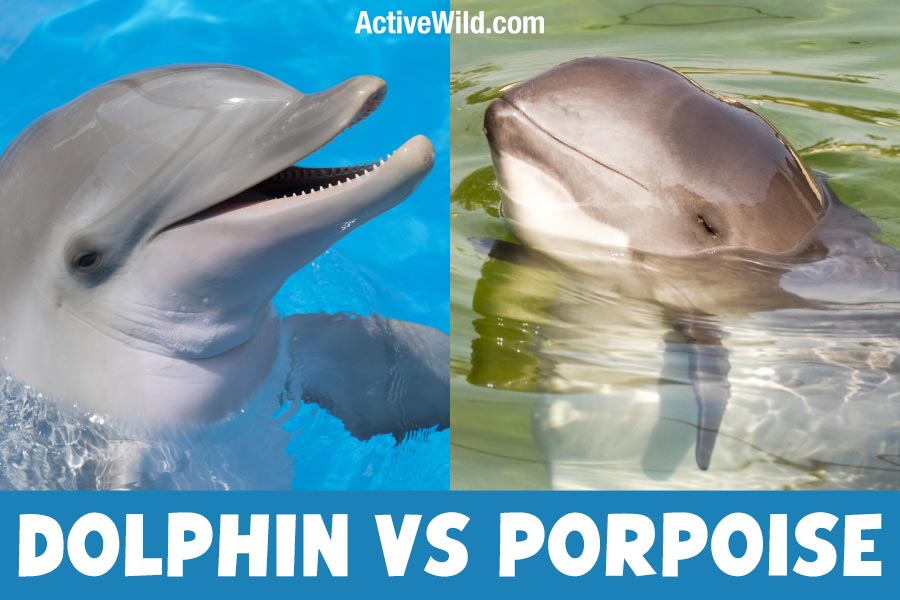What is the difference between dolphins and porpoises? The relationship between these separate, but related groups of marine mammals is a source of confusion for many.
On this page, we look at the differences between dolphins and porpoises, and discover some interesting facts about dolphins, porpoises, and other cetaceans…
Page Index
- Dolphin Vs Porpoise Summary
- Dolphins And Porpoises
- Difference Between Dolphins And Porpoises
- Example Species
- Common Bottlenose Dolphin
- Harbor Porpoise
- Dolphin and Porpoise Families With Number Of Species
- Dolphins In Disguise?
- Similarities Between Dolphins And Porpoises
- Both Dolphins And Porpoises Are Descended From Land Animals
- Discover More With Active Wild
Dolphin Vs Porpoise Summary
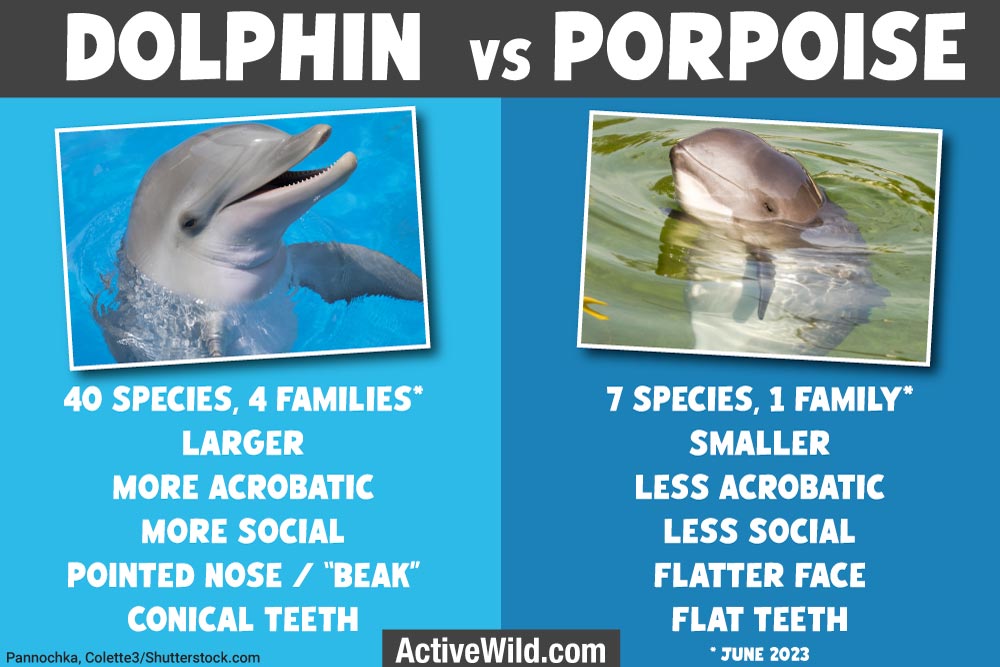
Although dolphins and porpoises are both marine mammals belonging to the group Cetacea (which also contains whales), there are numerous differences between the two groups of animals. Dolphins are typically larger, have a sleeker, more streamlined body with a pronounced "beak" or rostrum, a curved dorsal fin, conical teeth, and are social, living in large pods.
Porpoises are typically smaller, with a more compact, robust body shape, a smaller head without a pronounced beak, a triangular dorsal fin, spade-shaped teeth, and are usually less social, often being found either in smaller groups or alone.
A more detailed list of the differences between a dolphin and a porpoise can be found further down the page.
Dolphins And Porpoises
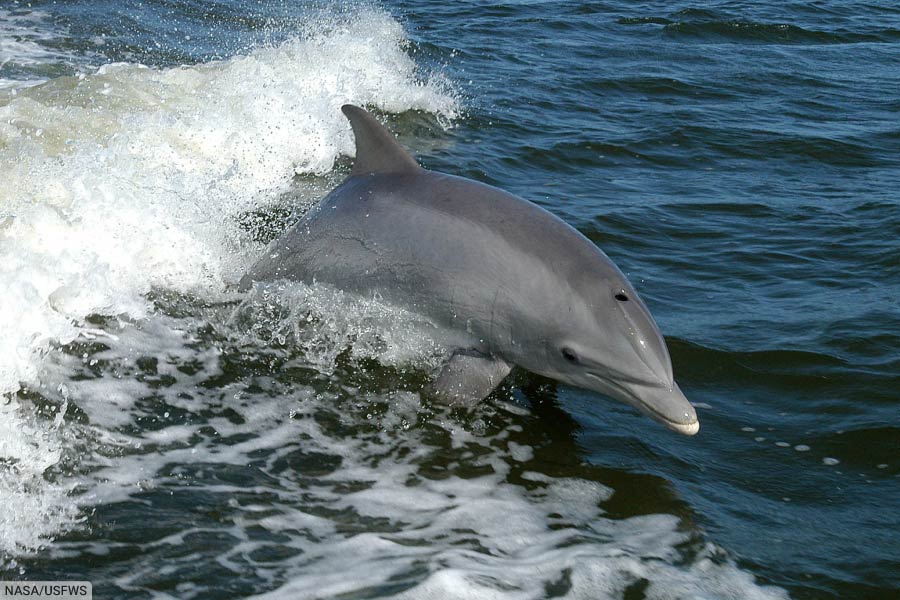
Dolphins and porpoises are marine mammals belonging to the infraorder Cetacea, which is also home to whales.
There are 40 living species of dolphins, compared to just 7 species of porpoises. (Source, Catalogue of Life, June 23).
There are also more dolphin families; the 40 dolphin species are divided between 4 families, with all but four species belonging to the oceanic dolphin family, Delphinidae.
All seven porpoises belong to the same family: Phocoenidae.
Difference Between Dolphins And Porpoises
- Size: Dolphins are generally larger, with familiar species such as the bottlenose dolphins exceeding 10 feet / 3.05 meters. Porpoises are usually smaller, typically not exceeding 7 feet / 2.13 meters.
- Shape: Dolphins have a sleek, streamlined body with a prominent and elongated "beak" or rostrum. Porpoises, on the other hand, have a more compact, robust body shape with a smaller head and no pronounced beak.
- Dorsal Fin: Dolphins have a curved, or falcate, dorsal fin, which can be compared to the shape of a wave. In contrast, porpoises have a triangular dorsal fin, similar to a shark's.
- Teeth: Dolphins have conical shaped teeth, while porpoises have spade-shaped or flat teeth.
- Behavior: Dolphins are typically more outgoing and are known for their acrobatic behavior. They often leap out of the water, ride swells and waves, and they're very vocal. Porpoises are usually shy and more reserved; they're not as commonly seen leaping out of the water or interacting with humans.
- Social Structure: Dolphins tend to live in larger social groups, or pods, while porpoises are usually found in smaller groups or alone.
- Species Diversity: There are around 40 species of dolphins, while there are only 7 known species of porpoises.
- Communication: Dolphins are known for their sophisticated communication systems, using a series of clicks, whistles, and body movements. While porpoises are also known to use sound for communication and echolocation, they are generally believed to have a less complex communication system compared to dolphins.

Example Species
Common Bottlenose Dolphin
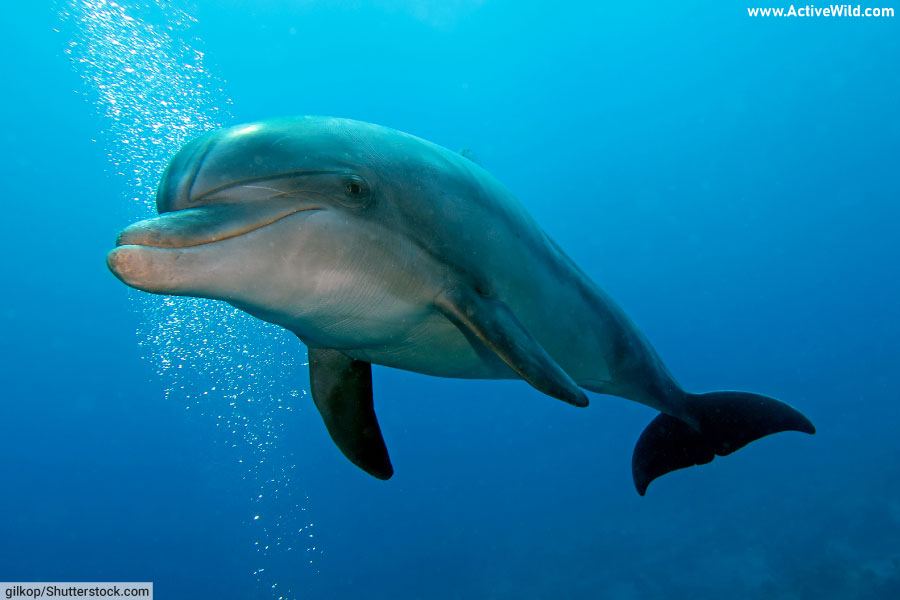
The common bottlenose dolphin, scientific name Tursiops truncatus, is one of the most familiar and widely distributed marine mammal species. Primarily found in warm and temperate seas worldwide, these intelligent creatures are famed for their playful nature and acrobatic prowess.
Bottlenose dolphins can reach lengths of up to 13 feet / 3.96 meters and weigh as much as 1,400 pounds / 635 kg. Recognizable by their prominent 'bottle-shaped' beak, they exhibit a complex social structure and communicate through a series of clicks, whistles, and body movements.
Harbor Porpoise

The harbor porpoise, scientific name Phocoena phocoena, is a small marine mammal that resides primarily in the cold coastal waters of the North Atlantic, North Pacific, and Black Sea.
Smaller than most dolphin species, harbor porpoises typically measure between 5 and 6 feet / 1.52 and 1.83 meters long and weigh around 110 to 200 pounds / 50 to 91 kg.
They are identifiable by their rounded bodies, blunt noses, and small, triangular dorsal fins. Unlike the acrobatic dolphins, harbor porpoises are known for their shyness and elusive behavior, making them less frequently spotted by humans.
Dolphin and Porpoise Families With Number Of Species
| Family | Name | No. of Species |
| Delphinidae | Oceanic dolphins | 37 |
| Platanistidae | Indian river dolphins | 1 |
| Iniidae | New World river dolphins | 1 |
| Pontoporiidae | Brackish dolphins | 1 |
| Phocoenidae | Porpoises | 7 |
A fifth dolphin family, Lipotidae, contains the baiji, a freshwater dolphin found in China’s Yangtze river system. Sadly, the baiji is believed to have recently become extinct.
Dolphins In Disguise?
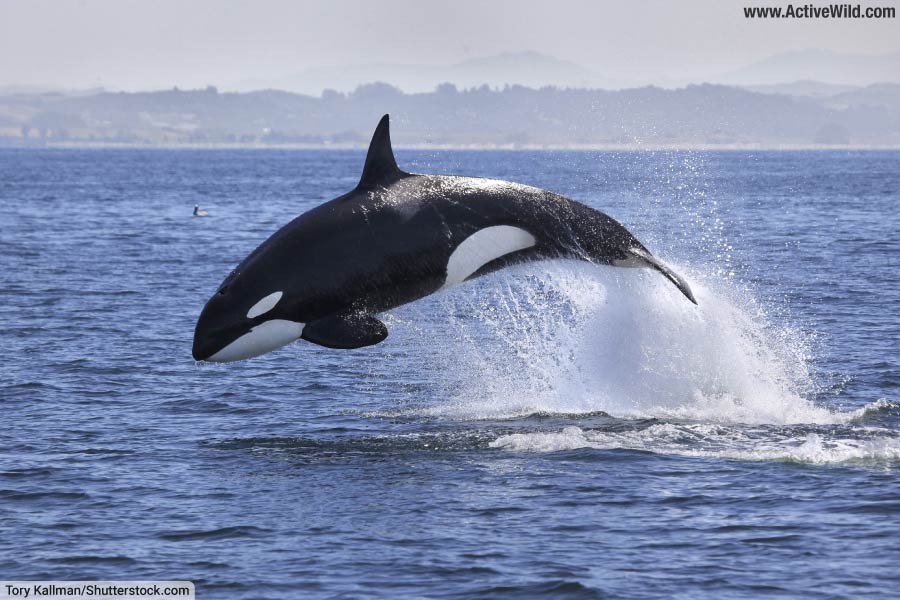
Some cetaceans commonly known as whales are actually dolphins. These include the killer whale (also known as the orca) and both the short-finned and long-finned pilot whales.
Similarities Between Dolphins And Porpoises
Dolphins and porpoises are both marine mammals belonging to the infraorder Cetacea (which is also home to whales). Members of Cetacea are known as cetaceans.
Both dolphins and porpoises are classed as “toothed whales”. Toothed whales belong to the parvorder Odontoceti, which is one of the two groups or cetaceans.
The other group of cetaceans is the parvorder Mysticeti, known as baleen whales. Baleen whales are filter feeders, using comb-like “baleen plates” in their mouths to separate food from the seawater.
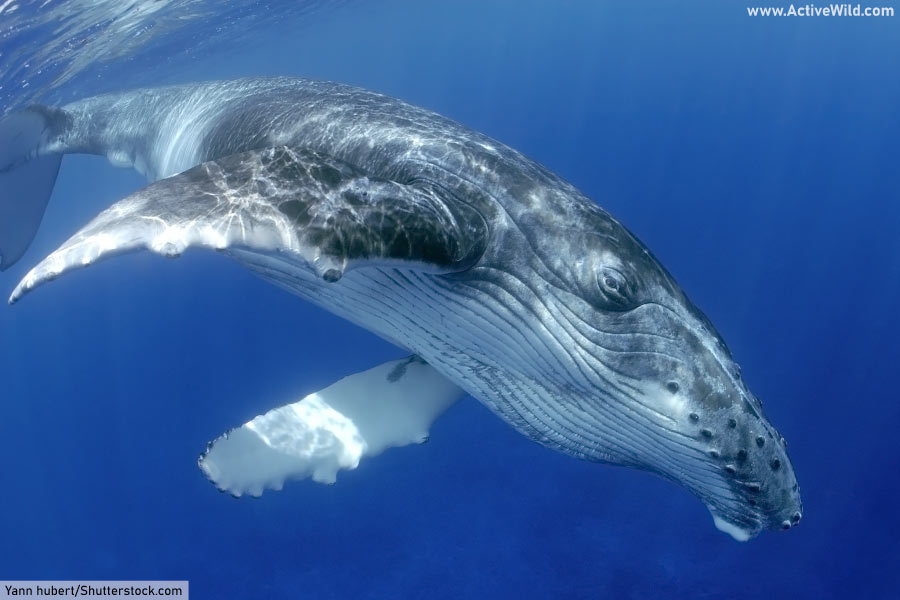
Being mammals, both dolphins and porpoises are warm-blooded, breathe air, give birth to live young and nurse their young with milk.
You can discover more characteristics of mammals on this page: Mammals – The Ultimate Guide
Dolphins and porpoises have streamlined, “fish-like” bodies, are fast swimmers, breathe via a blowhole located on top of their heads, and primarily consume a diet of fish and squid.
Both dolphins and porpoises are highly intelligent, and equipped with “echolocation”, an adaptation that allows them to “see” their surroundings using the echoes of sounds they produce.
Both Dolphins And Porpoises Are Descended From Land Animals
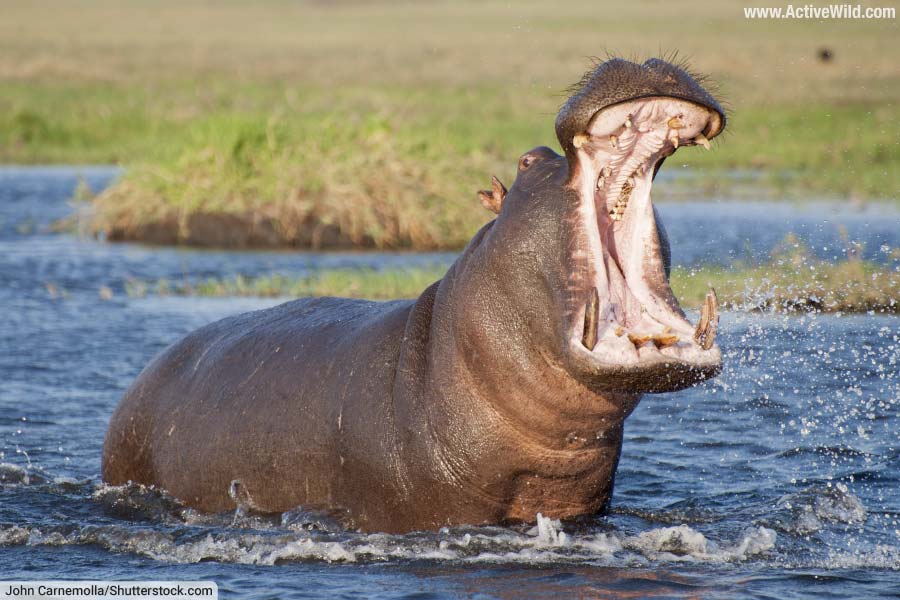
The ancestors of all cetaceans were land animals of order Artiodactyla – a group known as the even-toed ungulates.
Over millions of years, cetaceans became fully aquatic, but are still classed as even-toed ungulates.
Therefore, the closest living relatives of dolphins, porpoises and whales are terrestrial even-toed ungulates, a group that includes animals such as camels, pigs and deer.
Of all the living even-toed ungulates, biologists believe it is hippopotamuses that are the most closely-related to cetaceans.
Discover More With Active Wild
- Visit our main animals page for information on the entire animal kingdom: Animals
- Discover the different types of dolphins on this page: Types of Dolphins
- Find out more about the different types of mammals on this page: Types of Mammals
- Discover some more amazing cetaceans here: Top Ten Largest Whale Species

